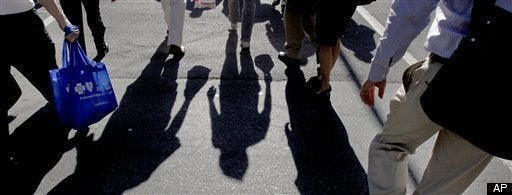
No matter how well I know a place, or how much research I've done, I always learn something unexpected when I take a walking tour -- not just from the official tour, but often from the unscripted moments of chitchat with my tour guide.
I grew up in New York City, the granddaughter of Eastern Europeans who entered the country through Ellis Island, but I didn't know until I took one of the Tenement Museum's excellent walking tours of the Lower East Side that Division Street divided two neighboring farms, the Rutgers' farm and the Delanceys' farm. Delancey (or de Lancey, or DeLancey) was a loyalist, Rutgers was a patriot, so maybe the division kept more than crops and cows apart. I didn't know that America Ferrera owns a condo in the building that once housed my grandfather's favorite newspaper, the Forward. Or that Chinese restaurants all over the country are staffed through agencies here: immigrants come in, are handed a bus ticket, and off they go to serve Peking duck and shrimp fried rice in North Carolina or Wisconsin or Kansas. Suddenly, a scene I'd seen a million times looked a little different.
Savannah may be the guided-tour capital of the world. Dozens of trolleys full of tourists lumber through the small streets; locals learn to step deftly around them. At night, buses and guides deck out in ghoulish attire, for ghost tours, and historic homes all offer (insist on) their own guided tours. My favorite, however, was a walking tour with Architectural Tours of Savannah with Jonathan Stalcup, a former SCAD student who never left the interesting little city that he calls "a textbook of architecture." He has shady spots all staked out as he walks groups through Savannah's architecture from the 1700s to the future. (Should the city demolish the circa 1970s civic center? Discuss.) From Jonathan I learned that all Savannah's moss-draped live oaks were landscaped in; that the Marshall House was built by a woman, developer Mary Marshall; and that when William Jay received a commission to design the Owens-Thomas House, the city's first architect-designed home, "He put everything in this that he ever thought about in school, just in case he never got another commission."
In Dublin, I learned from guide Helena Nugent that according to student lore, if the bell rings while you're passing under the arch on the Trinity College, it means you aren't a virgin. (Assuredly not the shocker today it once was.) That a drop of black currant takes some of the bitterness from a Guinness. That Maeve Binchy outsells James Joyce. That County Cork manufactures the world's Viagra, "because we don't need it," Helena said with a giggle.
And I was glad to start my short visit to Derry/Londonderry, one of Northern Ireland's most complicated, conflicted places, with a walking tour, even on a windy, rainy day that only a tourist on a schedule would brave.
I'd read that Derry was a shirt-making center but didn't know why until my guide Tommy Carlin mentioned that when families emigrated during the potato family, the eldest daughter often stayed behind to care for elderly family members, creating a workforce of potential seamstresses. In the Tower Museum, Tommy told me how Frederick Hervey, Bishop of Derry build the first bridge across the Foyle River in order to visit a girlfriend on the other side. And if not for Tommy, I might have overlooked a photo of Liam Neeson in his first professional acting role, in a play about the ordnance survey.
And as we perused an exhibit about The Troubles, Tommy commented on his personal circumstances, the kind of thing that fed the strife in Northern Ireland. "I grew up in a single room with father, mother, brother and sister," he said. "At one time, there were 13 people living with us but only my grandfather had a vote.
That was an image of Derry I couldn't have seen any other way...